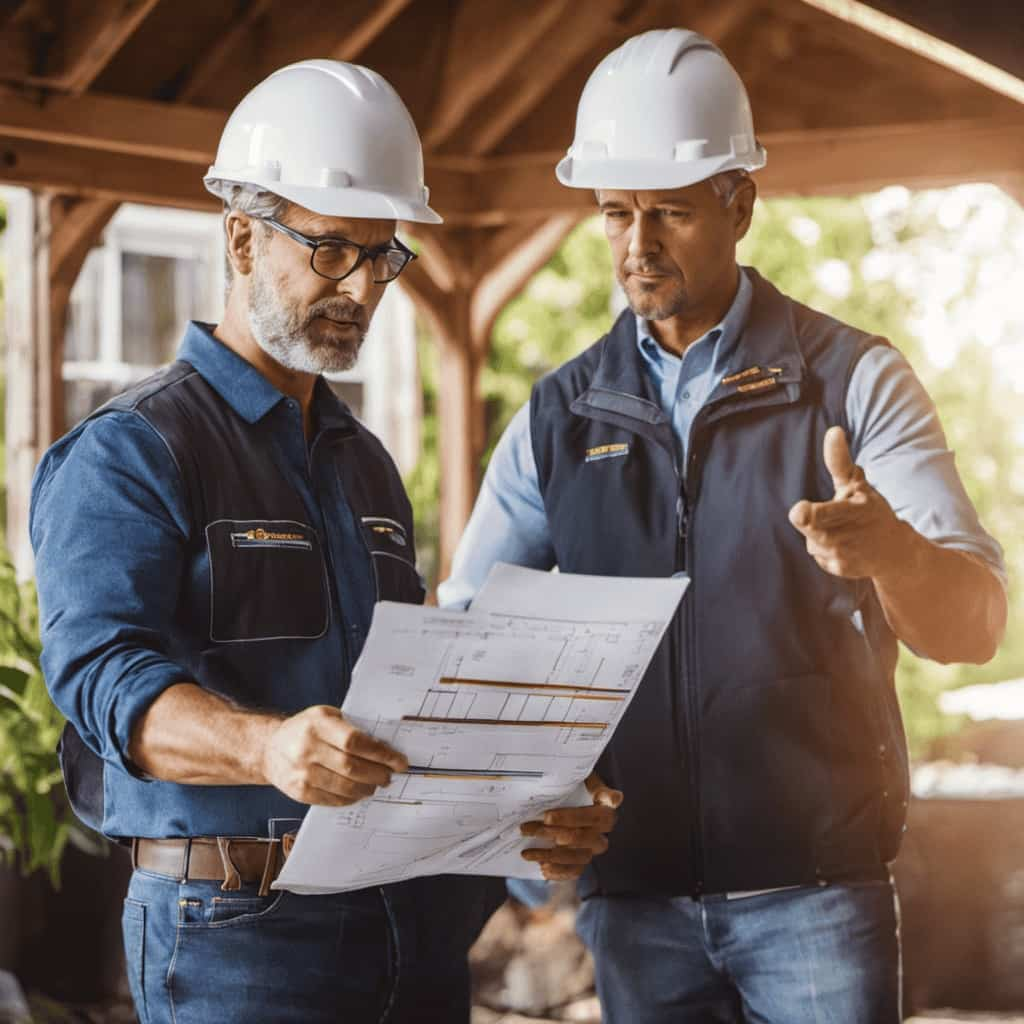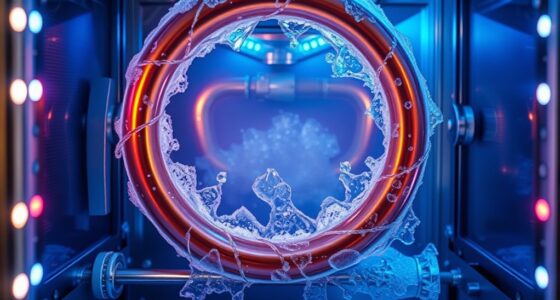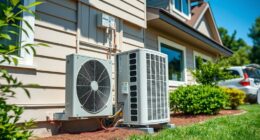Have you ever thought about how heat pumps keep our homes warm in the winter and cool in the summer?
In this article, we will delve into the fascinating world of heat pump basics, focusing specifically on the refrigeration cycle.
By understanding this essential process, we can grasp the inner workings of heat transfer and troubleshoot common issues that may arise.
So, join us as we unravel the mysteries of the refrigeration cycle and unlock the secrets of efficient heat pump operation.

Key Takeaways
- The refrigeration cycle is crucial for efficient heat transfer in heat pumps and enables them to provide both heating and cooling.
- Understanding the refrigeration cycle is essential for heat pump maintenance and energy efficiency.
- The components of the refrigeration cycle include the evaporator coil, compressor, condenser coil, and expansion valve, and each plays a vital role in the heat pump system.
- Maximizing heat transfer efficiency through mechanisms such as conduction, convection, and radiation is crucial for optimizing the performance and energy efficiency of heat pump systems.
The Importance of the Refrigeration Cycle in Heat Pumps
We rely on the refrigeration cycle to efficiently transfer heat in our heat pumps. The refrigeration cycle is a crucial component that enables heat pumps to provide both heating and cooling. Understanding the importance of this cycle is essential for efficient heat pump maintenance and maximizing energy efficiency.
The refrigeration cycle works by using a refrigerant, a substance that easily changes between gas and liquid states, to absorb and release heat. It begins with the evaporator coil, where the refrigerant absorbs heat from the surrounding air, turning it into a low-pressure gas. This gas is then compressed by the compressor, raising its temperature and pressure. The high-pressure gas then flows into the condenser coil, where it releases heat to the outside air, turning back into a liquid. Finally, the liquid refrigerant passes through an expansion valve, lowering its pressure and temperature, and the cycle begins again.
Regular heat pump maintenance ensures that the refrigeration cycle remains efficient, preventing any obstructions or leaks that could reduce its effectiveness. By maintaining the refrigeration cycle, we can ensure optimal energy efficiency in our heat pumps, providing comfort and reliability while minimizing energy consumption.
Understanding Heat Transfer in the Refrigeration Cycle
As we explore the topic of understanding heat transfer in the refrigeration cycle, it’s essential to consider the different types of heat transfer involved. These include conduction, convection, and radiation, each playing a crucial role in the overall efficiency of the heat transfer process.

Types of Heat Transfer
Our understanding of the refrigeration cycle relies on grasping the types of heat transfer involved. Heat transfer plays a crucial role in the functioning of a heat pump, as it allows for the movement of thermal energy from one location to another. The two main types of heat transfer in the refrigeration cycle are conduction and convection.
Conduction is the transfer of heat through direct contact between two objects. In the refrigeration cycle, conduction occurs when heat is transferred from the warm refrigerant to the colder evaporator coil, causing the refrigerant to evaporate.
Convection, on the other hand, involves the transfer of heat through the movement of a fluid, such as air or water. In the refrigeration cycle, convection occurs when the warm refrigerant vapor is circulated through the condenser coil, where it releases heat to the surrounding air or water.
Understanding these types of heat transfer is essential for designing and operating efficient heat pump systems. By maximizing the efficiency of conduction and convection, we can ensure optimal heat transfer and improve the overall performance of the refrigeration cycle.

Importance of Refrigeration Cycle
Understanding the importance of the refrigeration cycle involves comprehending the role of heat transfer in efficiently transferring thermal energy within a heat pump system. Heat pump technology relies on the principle of transferring heat from a low-temperature environment to a high-temperature environment, using a refrigerant as the medium.
This process is achieved through a series of heat transfer mechanisms, including conduction, convection, and radiation. By effectively utilizing these mechanisms, heat pump systems can achieve high levels of energy efficiency, as they require less energy input to transfer heat compared to traditional heating or cooling systems. Energy efficiency is a crucial factor in today’s world, where sustainability and reducing energy consumption are paramount.
By understanding the importance of heat transfer in the refrigeration cycle, we can optimize the efficiency of heat transfer and further enhance the overall performance of heat pump systems.
Now, let’s delve into the subsequent section about the efficiency of heat transfer.

Efficiency of Heat Transfer
To maximize the efficiency of heat transfer in the refrigeration cycle, we must focus on optimizing the flow and exchange of thermal energy within the system. Heat pump efficiency is a crucial factor in achieving this optimization.
Heat transfer optimization involves minimizing energy losses and maximizing the effectiveness of heat exchange between the different components of the system. One way to enhance heat transfer efficiency is by using advanced heat exchangers that offer a larger surface area for heat exchange.
Additionally, improving the insulation and sealing of the system can reduce heat losses. Another technique is to optimize the refrigerant flow rate and pressure within the system, ensuring efficient heat transfer between the evaporator and condenser.
Components of the Refrigeration Cycle for Heat Pumps
Let’s now examine the essential components that make up the refrigeration cycle in heat pumps and understand the function of each component.

These components include the compressor, condenser, expansion valve, and evaporator.
The compressor plays a vital role in raising the pressure and temperature of the refrigerant, while the condenser facilitates the transfer of heat from the refrigerant to the surrounding environment.
The expansion valve controls the flow of refrigerant and reduces its pressure, and finally, the evaporator absorbs heat from the surroundings, causing the refrigerant to evaporate.
Essential Cycle Components
We need to examine the essential cycle components that make up the refrigeration cycle for heat pumps. These components play a crucial role in the efficient operation of heat pumps by facilitating the transfer of heat from one place to another. Below is a table detailing the four main components of the refrigeration cycle and their functions:
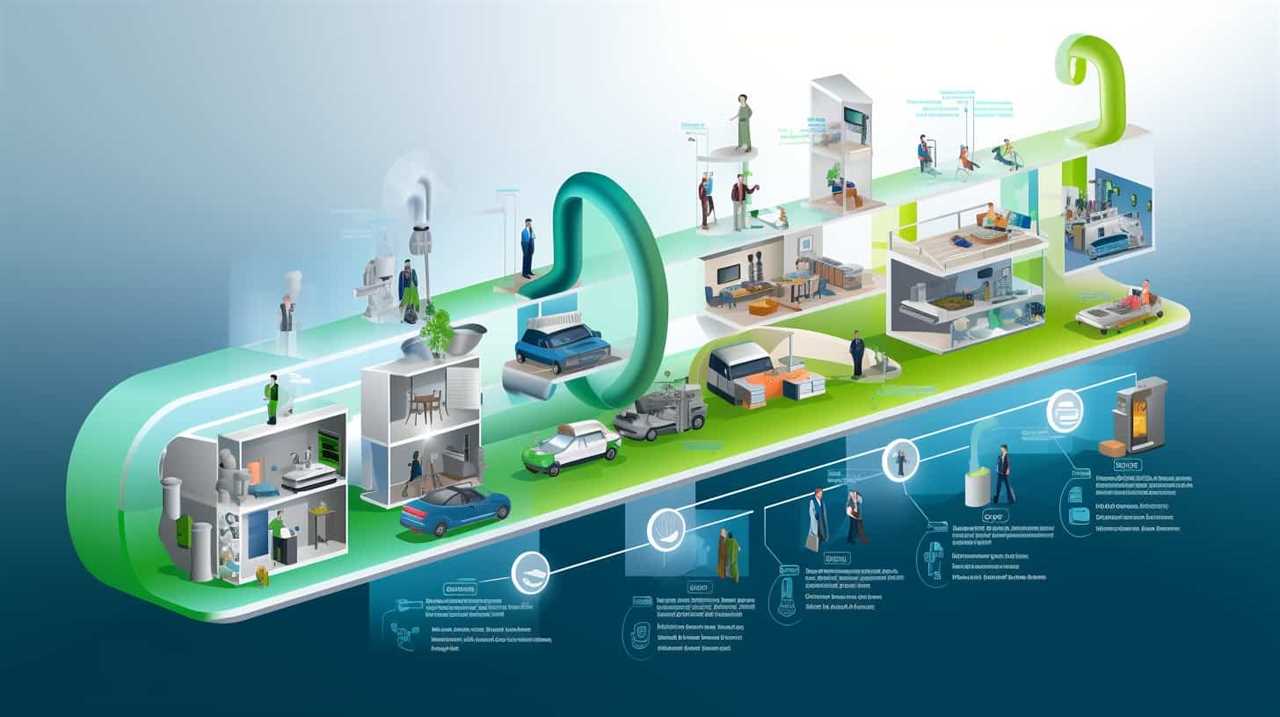
| Component | Function |
|---|---|
| Compressor | Increases the pressure and temperature of the refrigerant, allowing it to absorb heat from the source. |
| Condenser | Transfers heat from the refrigerant to the surroundings, causing it to condense into a liquid state. |
| Expansion Valve | Reduces the pressure of the refrigerant, causing it to expand and cool down. |
| Evaporator | Absorbs heat from the surroundings, causing the refrigerant to evaporate and turn into a gas state. |
Understanding the purpose and function of these cycle components is essential for anyone involved in heat pump installation, maintenance, or repair. By grasping the intricacies of the refrigeration cycle, one can ensure the optimal performance and longevity of heat pump systems.
Function of Each Component
Our understanding of the refrigeration cycle for heat pumps is enhanced by examining the function of each component.
The compressors in the system play a crucial role in the cycle. They’re responsible for increasing the pressure and temperature of the refrigerant, which allows it to release heat into the surrounding environment. This process is essential for the heat pump to absorb heat from a cold source and transfer it to a warmer area.
On the other hand, the evaporators are responsible for absorbing heat from the cold source. They achieve this by evaporating the refrigerant, which extracts heat from the surroundings.

The function of each component is vital in ensuring the efficient operation of the heat pump system. Understanding how compressors and evaporators work will provide a foundation for exploring the role of compressors in the refrigeration cycle.
The Role of Compressors in the Refrigeration Cycle
The compressor plays a vital role in the refrigeration cycle by increasing the pressure of the refrigerant gas. It’s an essential component that helps maintain the efficiency of the heat pump system. Here are some key points to understand about compressors:
-
Compressor Efficiency: A well-maintained compressor ensures optimal performance and energy efficiency. Regular maintenance, such as cleaning filters and checking for leaks, can help improve its efficiency.
-
Compressor Maintenance: Proper maintenance of the compressor is crucial for its longevity and reliability. This includes regular inspections, lubrication, and addressing any issues promptly.
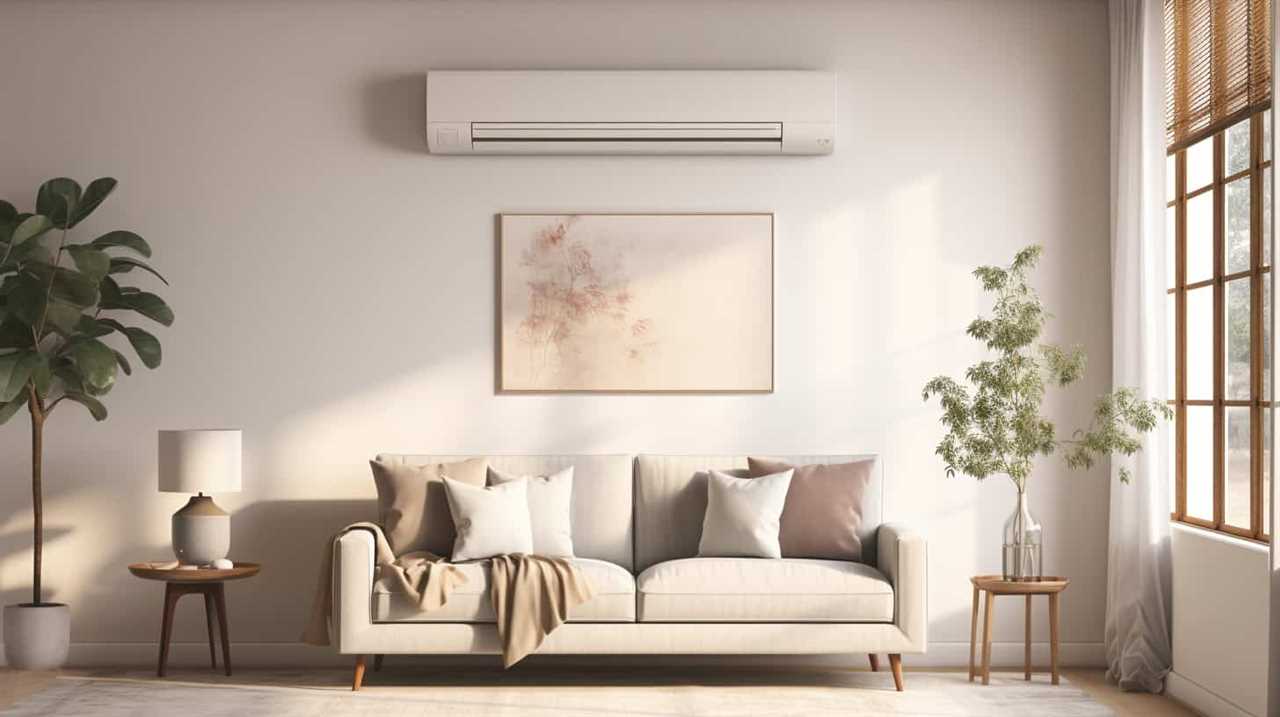
-
Importance of Proper Sizing: Choosing the right-sized compressor for the heat pump system is important to ensure efficient operation and avoid unnecessary wear and tear.
-
Role in Heat Transfer: The compressor pressurizes the refrigerant gas, increasing its temperature and allowing it to release heat when it reaches the condenser.
Understanding the role and importance of compressors sets the stage for discussing evaporators and condensers, which are key players in the refrigeration cycle.
Evaporators and Condensers: Key Players in the Refrigeration Cycle
Understanding how evaporators and condensers function is crucial in comprehending the refrigeration cycle. Evaporators play a vital role in the heat pump system by absorbing heat from the surrounding environment, causing the refrigerant to evaporate and turn into a gas. This process is facilitated by various evaporator designs, such as finned tube, plate, and shell-and-tube evaporators. Each design offers different benefits and is suited for specific applications. On the other hand, condensers are responsible for releasing heat into the surroundings, causing the refrigerant to condense back into a liquid state. Proper condenser maintenance is essential to ensure efficient heat transfer and prevent system malfunctions. Regular cleaning, checking for leaks, and maintaining adequate airflow are some key aspects of condenser maintenance. By understanding the functions and maintenance requirements of evaporators and condensers, technicians can ensure optimal performance and longevity of heat pump systems.

| Evaporator Designs | Benefits | Applications |
|---|---|---|
| Finned Tube Evaporators | Enhanced heat transfer | Air conditioning, refrigeration |
| Plate Evaporators | Compact size, high efficiency | Industrial refrigeration, food processing |
| Shell-and-tube Evaporators | Versatile, suitable for high-pressure applications | Chemical processing, power generation |
Troubleshooting Common Issues in the Refrigeration Cycle of Heat Pumps
When troubleshooting common issues in the refrigeration cycle of heat pumps, we often encounter problems with the compressor and refrigerant levels. To effectively address these malfunctions, it’s important to employ specific troubleshooting techniques. Here are some common issues and their corresponding solutions:
-
Compressor Failure: Check for electrical issues, such as blown fuses or tripped breakers. Inspect the compressor for signs of damage or excessive wear. Replace the compressor if necessary.
-
Low Refrigerant Levels: Use a pressure gauge to measure the refrigerant levels. If they’re low, there may be a leak in the system. Locate and repair the leak, then recharge the refrigerant to the correct levels.
-
Restricted Refrigerant Flow: Inspect the refrigerant lines for blockages or restrictions. Clean or replace any clogged components to restore proper flow.

-
Inadequate Heat Exchange: Ensure that the evaporator and condenser coils are clean and free of debris. Clean or replace the coils if necessary to improve heat exchange efficiency.
Frequently Asked Questions
How Much Electricity Does a Heat Pump Consume?
We consume an astonishing amount of electricity with our heat pump. Factors such as heat pump efficiency, insulation, and temperature settings affect the consumption. It’s important to understand these factors to optimize efficiency and conserve electricity.
Can a Heat Pump Be Used for Both Heating and Cooling Purposes?
Yes, a heat pump can be used for both heating and cooling purposes. It offers high efficiency and numerous benefits, such as energy savings, year-round comfort, and environmentally friendly operation.
Are Heat Pumps Noisy When in Operation?
Yes, heat pumps can be noisy when in operation. However, there are various heat pump noise reduction techniques available to minimize the noise levels, ensuring a quieter and more comfortable environment for everyone.
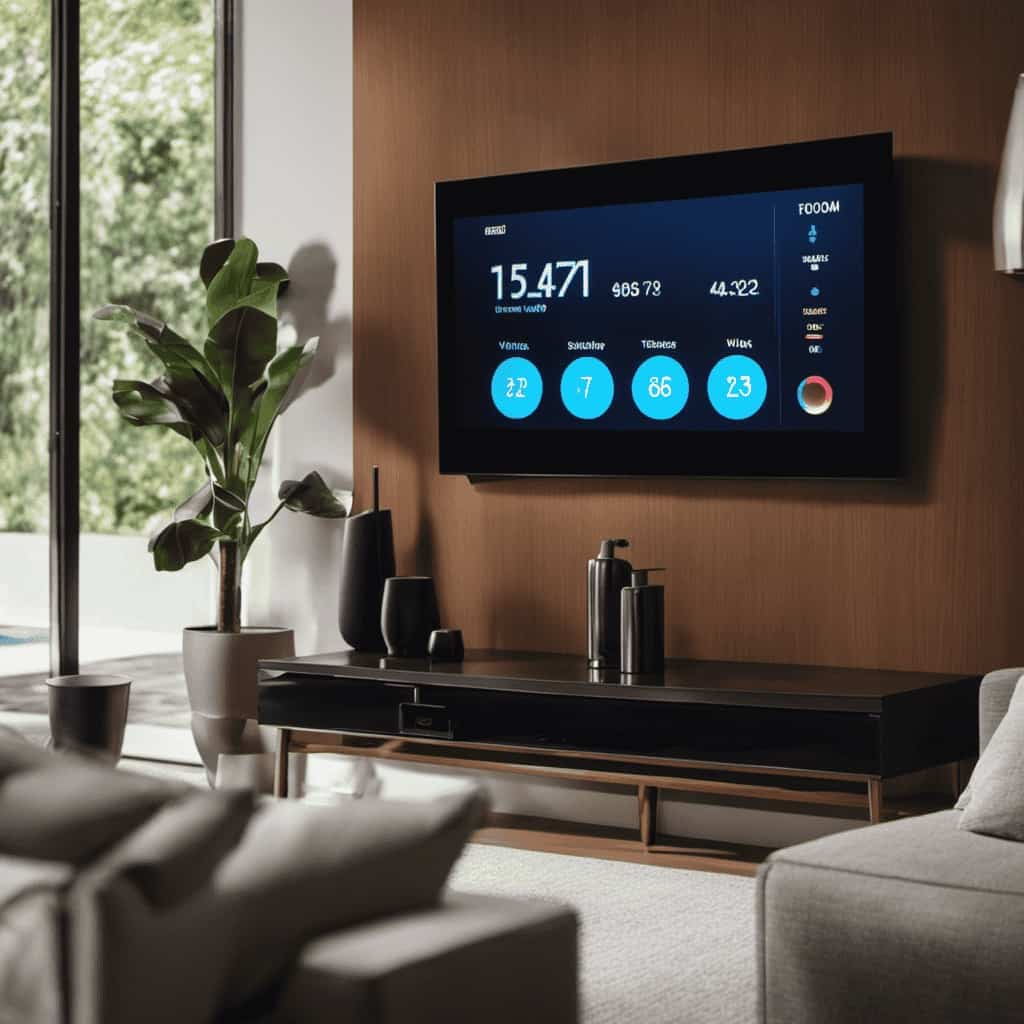
What Is the Lifespan of a Heat Pump?
The lifespan of a heat pump can vary depending on factors such as proper heat pump maintenance, usage patterns, and the quality of the installation. These factors can significantly impact the longevity of a heat pump.
Can a Heat Pump Be Installed in Any Type of House?
Installing a heat pump in any type of house requires careful consideration of various factors. Factors such as the size of the house, insulation, and existing ductwork determine the compatibility of the heat pump with the house.
Conclusion
In conclusion, the refrigeration cycle is the heart of a heat pump, allowing it to efficiently transfer heat. Understanding the components, such as compressors, evaporators, and condensers, is crucial for troubleshooting any issues that may arise.
Like a well-oiled machine, the refrigeration cycle keeps the heat pump running smoothly, ensuring optimal performance. Just as a conductor directs an orchestra, the refrigeration cycle orchestrates the movement of heat, creating a harmonious balance within the system.


